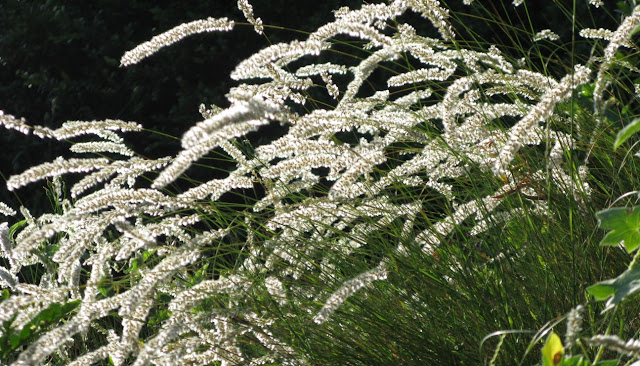Almost 10 years ago, in January 2009, the Pilgrims' Nest was born. It was a unique concept which began its slow but steady growth and development, an idea, a dream that became materialized (see 1st blog post December 2008). Now, at the end of 2018, it looks like we are finishing a chapter. It has been a time of welcoming many people from all corners of the world, but also a time of organizing concerts and events, hosting workshops, music sessions, exhibitions, gatherings... It's been a fascinating period of creation and manifesting, of exchange and cooperation, and at the same time of continuously searching for the right shape in continuously changing circumstances. In short, an intense and expansive 10 years.
Since this year however, inspired by deeper meaning and by the cycles of nature in which the Nest is embedded, a shift seems to have presented itself naturally, a more inward movement, introspective, a calming down of activities, a change, allowing the place to re-breathe. After all, a sustainable evolution doesn't necessarily mean growing more and bigger infinitely...
While from the outside this may look like making a U-turn in comparison with previous years, it doesn't mean that the Nest will be closing its doors, not at all. It will only be more selective in terms of who and what and when. The portal will remain open...
In parallel with this shift, a big change in the nature in and around the Pilgrim's Nest is also taking place with the arrival in the region of the boxwood moth. This moth, coming from Asia, looks like a small, innocent and even beautiful little creature, but because of the presence of many many millions of them (driving at night in summer they show up in your headlights like if you'd be driving through a hell of a snowstorm!) and its very fast breeding cycle (3 to 4 generations per year) the effect here in the region is downright devastating.
 |
| the boxwood moth |
 |
| boxwood moths in the shower cabin |
Boxwood is a ubiquitous plant/shrub here in the hills of the Hautes Corbières. It grows abundantly everywhere in the wild, it even forms whole boxwood forests with old trees up to 8 meters tall with beautiful, irregularly shaped trunks. The neighbouring village of Bouisse is even named after it (the French word for boxwood is "buis", pronounced "bwi").
On our land boxwood is the most common plant species, it creates natural, visual separations between many cozy little corners and it also forms effective windbreaks against the frequent Tramontana winds. You could say that boxwood is the species that makes the place what it is.
But all that is bound to disappear completely due to the enormous voracity of the caterpillars which are produced in great numbers by the boxwood moths. In no time, they eat all the boxwood leaves and during the hottest 3 seasons they reproduce themselves in a rhythm of only 2 months, so that their numbers increase exponentially. A real tsunami in slow motion.
 |
| eggs of the boxwood moth, stuck against the bottom side of a boxwood leave |
 |
| boxwood caterpillar |
Both our land and the entire surrounding landscape are irrevocably undergoing a complete metamorphosis ...
 |
| dead boxwood shrubs |
 |
| boxwood trees under attack, envelopped in creepy caterpillar webs |
In an attempt to limit the damage and to not let the place become inaccessible by creepy tangles of webs usually left behind by the caterpillars, we were extremely busy this summer with secateur and chainsaw, with moth traps and with the one effective and organic pesticide on the market, based on bacillus thuringiensis. Perhaps it will turn out to be a plaster on an open wound and eventually we might lose the battle in the long run. Once the tsunami will have passed, it's highly probable that in the following years there will always be enough moths left behind to require constant vigilance and repeated actions, that's for sure.
 |
| trimming the boxwood forest next to the house |
 |
| moth trap |
Anyhow, the Nest already looks completely different now. Fortunately we have been able to save most of the boxwood hedges along the street side and elsewhere on our land from the first attacks this summer. For the time being that is. But countless young boxwood plants growing under the cedar trees have been pre-emtively eliminated, and of dozens of tall boxwood trees the branches have been removed and the trunk shortened to 2.5 m heigth, in the hope of saving more easily any new leaves from future attacks.
All in all, this development has given the Nest a very different outlook. Many of the cozy, enclosed corners have been partially or completely lost, but on the other hand everything has also become more open, and consequently lighter and sunnier, allowing other plants to grow eventually. So also nature is re-breathing...
Thus, in a world full of changes, the Pilgrim's Nest is floating along on its waves. We let ourselves be carried forward on the flow of what is presenting itself naturally, either inner or outer. In the end, isn't that how the way of the pilgrim goes...?
Pilgrims' Nest
Labit
11580 Villardebelle, France
https://drive.google.com/open?id=1x9WCvj4dOhJMWfDit4z62zg6ZBA&usp=sharing
Labit
11580 Villardebelle, France
https://drive.google.com/open?id=1x9WCvj4dOhJMWfDit4z62zg6ZBA&usp=sharing
gps: N 43.004953 / E 2.424280
email: pilgrimsnest@gmx.com
mobile: 0033 681250002











No comments:
Post a Comment